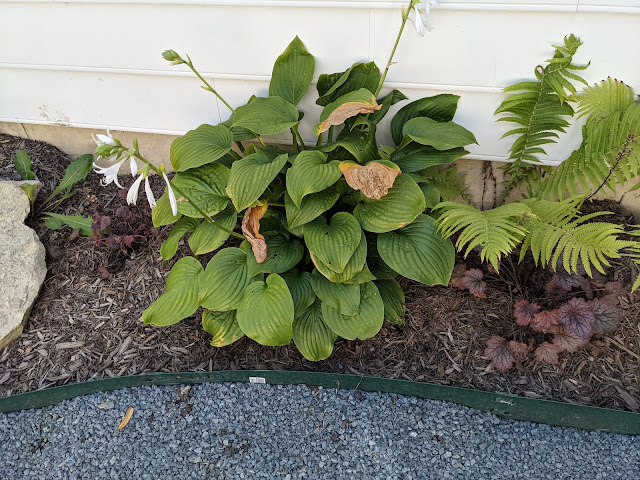Toad Lillies - No Flowers - August 2021

The last time, I posted on our toad lilies that I planted this Spring was earlier this month when I shared some photos of the buds that were about to burst and show flowers for the first time in our yard. Fast forward to today and when I was out in back, I noticed that ALL of the flowers were gone. Cut right off below where the buds were located. I say 'cut', but what I really think I mean is 'chewed' right off. By whom? I'm guessing rabbits. I planted these in late Spring . See below for a photo showing how these toad lilies were clipped/chewed right off. This means that we didn't get ANY flowers from these. Or at least, I didn't SEE them. Note to my future self: protect the toad lilies with some pest-fencing next year. Maybe with some poultry wire to ring these up? Seems like the critters like the buds and not the leaves.





